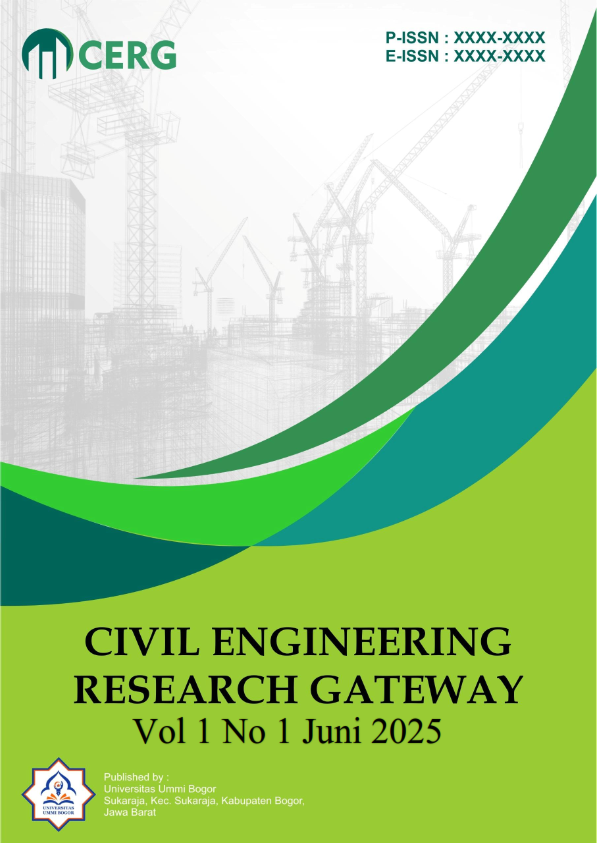Sustainable Innovations in Civil Engineering for Resilient Infrastructure and Urban Development
Keywords:
Civil Engineering, nfrastructure Resilience, Sustainable Construction, Technological Innovation, Urban DevelopmentAbstract
The accelerating pace of global urbanization and the growing risks associated with climate change have positioned civil engineering at the forefront of sustainable development challenges. Traditional construction methods, while effective in addressing immediate infrastructure needs, often fall short in meeting long-term sustainability and resilience requirements. This research explores sustainable innovations in civil engineering that contribute to resilient infrastructure and urban development by examining the integration of environmentally responsible materials, energy-efficient designs, and advanced digital technologies into modern construction practices. The primary objective is to highlight strategies that simultaneously reduce environmental impact, optimize resource utilization, and enhance structural adaptability in response to evolving social and environmental demands. A qualitative research approach supported by case study analysis was employed to assess the implementation of key practices such as the use of recycled and low-carbon materials, the adoption of modular and prefabricated construction techniques, and the application of smart monitoring systems for real-time infrastructure management. The findings reveal that sustainable innovations not only improve the durability and efficiency of urban infrastructure but also strengthen community resilience by providing adaptable solutions to environmental stresses such as flooding, heatwaves, and seismic activity. Moreover, the integration of digital modeling tools, including Building Information Modeling and simulation-based design, facilitates data-driven decision-making and enhances collaboration across project stakeholders. The study concludes that the advancement of sustainable civil engineering requires coordinated efforts among engineers, urban planners, and policymakers to promote innovation, enforce supportive regulations, and encourage investment in sustainable infrastructure. Ultimately, these innovations hold the potential to transform urban environments into more resilient, livable, and future-ready spaces.
References
Bowen, G. A. (2009). Document analysis as a qualitative research method. Qualitative Research Journal, 9(2), 27–40. https://doi.org/10.3316/QRJ0902027
Creswell, J. W., & Creswell, J. D. (2018). Research design: Qualitative, quantitative, and mixed methods approaches (5th ed.). SAGE Publications.
Durdyev, S., Zavadskas, E. K., Thurnell, D., Banaitis, A., & Ihtiyar, A. (2018). Sustainable construction industry in Cambodia: Awareness, drivers and barriers. Sustainability, 10(2), 392. https://doi.org/10.3390/su10020392
Flick, U. (2018). An introduction to qualitative research (6th ed.). SAGE Publications.
Goh, C. S., & Loosemore, M. (2017). The impacts of industrialization on construction subcontractors: A resource-based view. Construction Management and Economics, 35(5), 288–304. https://doi.org/10.1080/01446193.2016.1248984
He, Q., Chen, Y., & Luo, L. (2022). Resilient infrastructure: A systematic review on resilience assessment methods. Sustainable Cities and Society, 81, 103843. https://doi.org/10.1016/j.scs.2022.103843
Khalili, A., & Dueñas-Osorio, L. (2021). A framework for assessing urban infrastructure resilience to climate change using network theory and probabilistic risk analysis. Reliability Engineering & System Safety, 210, 107556. https://doi.org/10.1016/j.ress.2021.107556
Li, H., Wu, Z., Li, X., & Wang, X. (2020). Risk management for resilient sustainable infrastructure development in developing countries. Sustainability, 12(3), 956. https://doi.org/10.3390/su12030956
Marzouk, M., & Othman, A. (2017). Planning utility infrastructure requirements for smart cities using the integration between BIM and GIS. Sustainable Cities and Society, 35, 263–271. https://doi.org/10.1016/j.scs.2017.08.002
Opoku, A., & Ahmed, V. (2016). Leadership, culture and sustainable built environment. Buildings, 6(1), 14. https://doi.org/10.3390/buildings6010014
Palinkas, L. A., Horwitz, S. M., Green, C. A., Wisdom, J. P., Duan, N., & Hoagwood, K. (2015). Purposeful sampling for qualitative data collection and analysis in mixed method implementation research. Administration and Policy in Mental Health and Mental Health Services Research, 42(5), 533–544. https://doi.org/10.1007/s10488-013-0528-y
Paton, D., & Buergelt, P. T. (2019). Risk, transformation and resilience: Multidisciplinary insights and societal implications. Sustainability, 11(7), 1970. https://doi.org/10.3390/su11071970
Volk, R., Stengel, J., & Schultmann, F. (2019). Building Information Modeling (BIM) for existing buildings—Literature review and future needs. Automation in Construction, 38, 109–127. https://doi.org/10.1016/j.autcon.2013.10.023
Wuni, I. Y., & Shen, G. Q. (2020). Critical success factors for modular integrated construction projects: A review. Building Research & Information, 48(7), 763–779. https://doi.org/10.1080/09613218.2019.1660608
Yin, R. K. (2018). Case study research and applications: Design and methods (6th ed.). SAGE Publications.
Zhang, P., & Li, D. (2021). Innovation in sustainable construction: A bibliometric review and future research agenda. Journal of Cleaner Production, 289, 125159. https://doi.org/10.1016/j.jclepro.2020.125159
Downloads
Published
Issue
Section
License
Copyright (c) 2025 Civil Engineering Research Gateway

This work is licensed under a Creative Commons Attribution-ShareAlike 4.0 International License.



